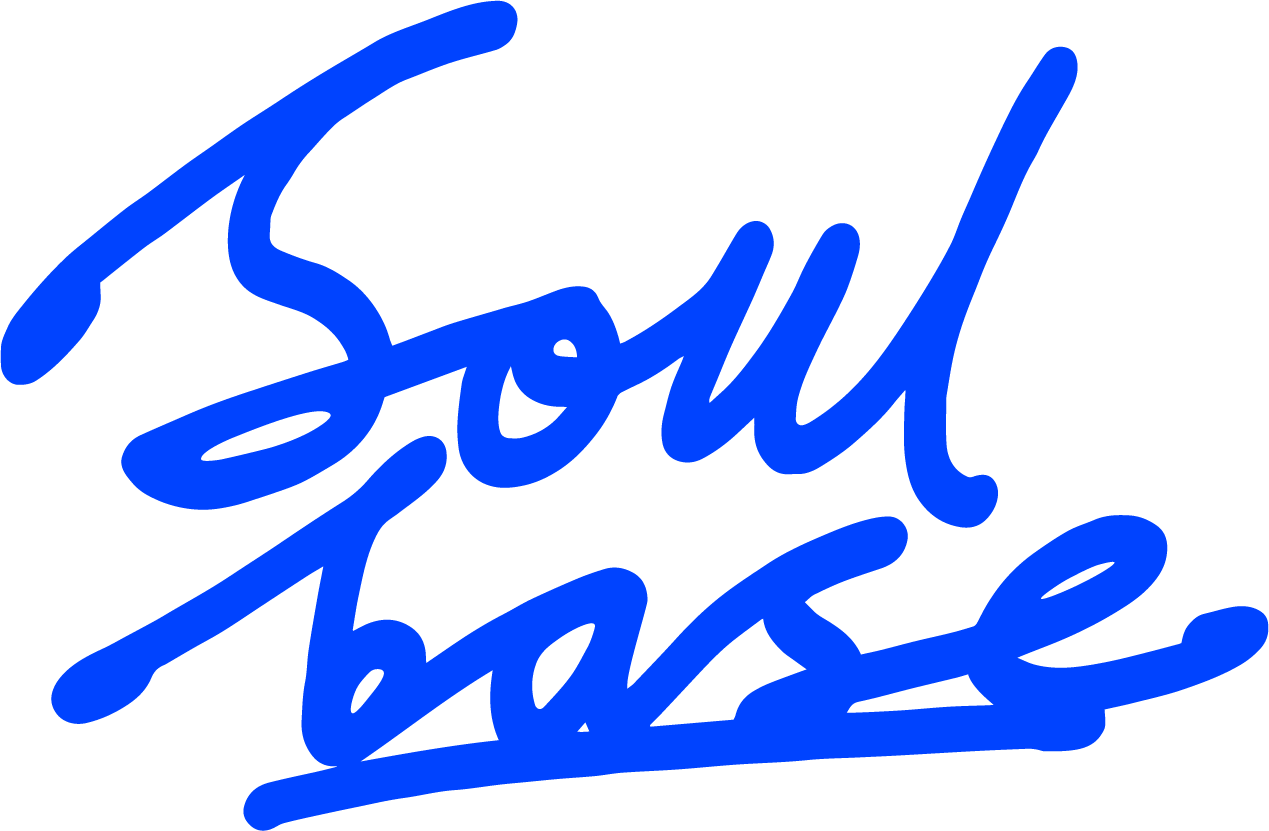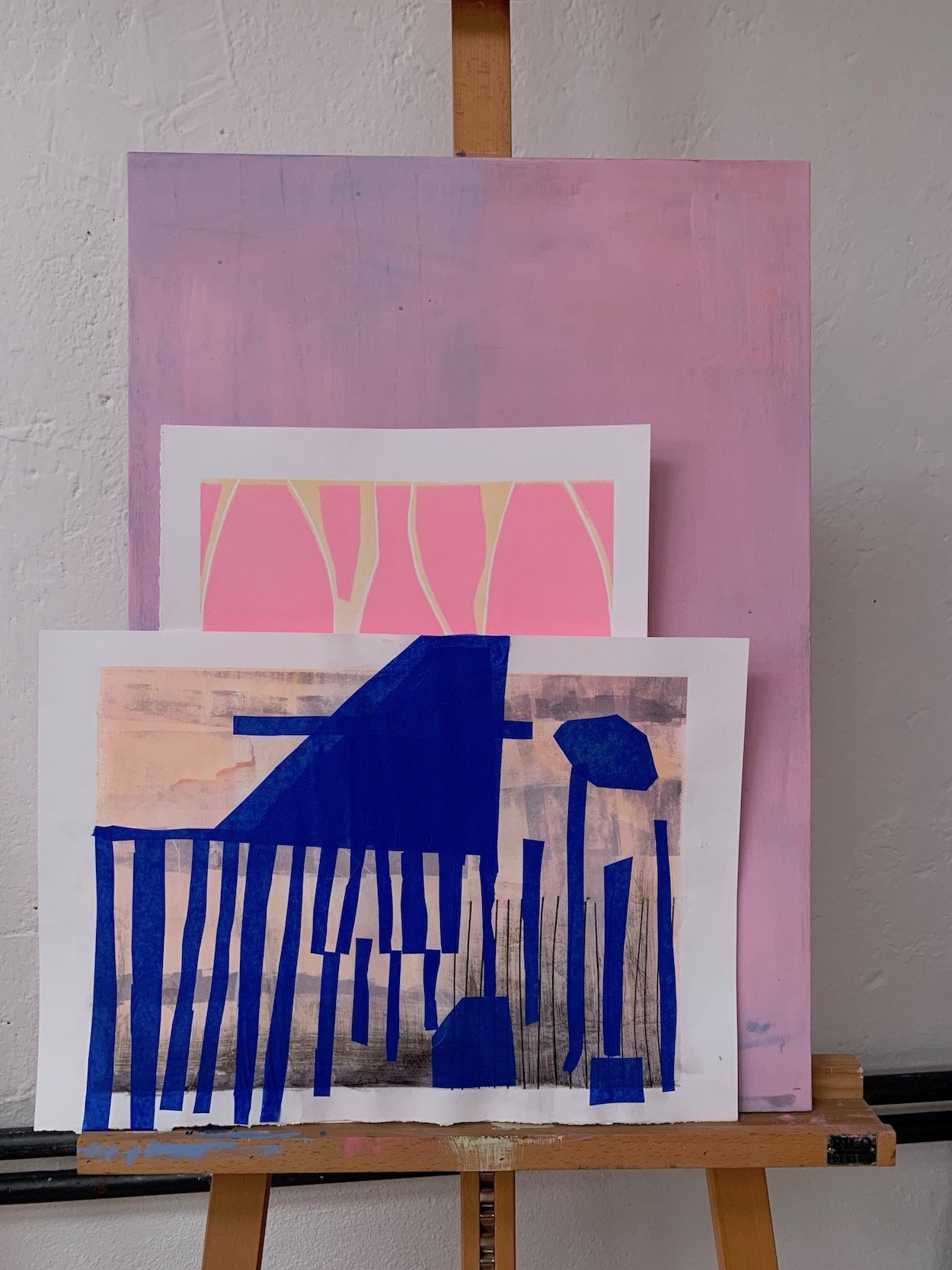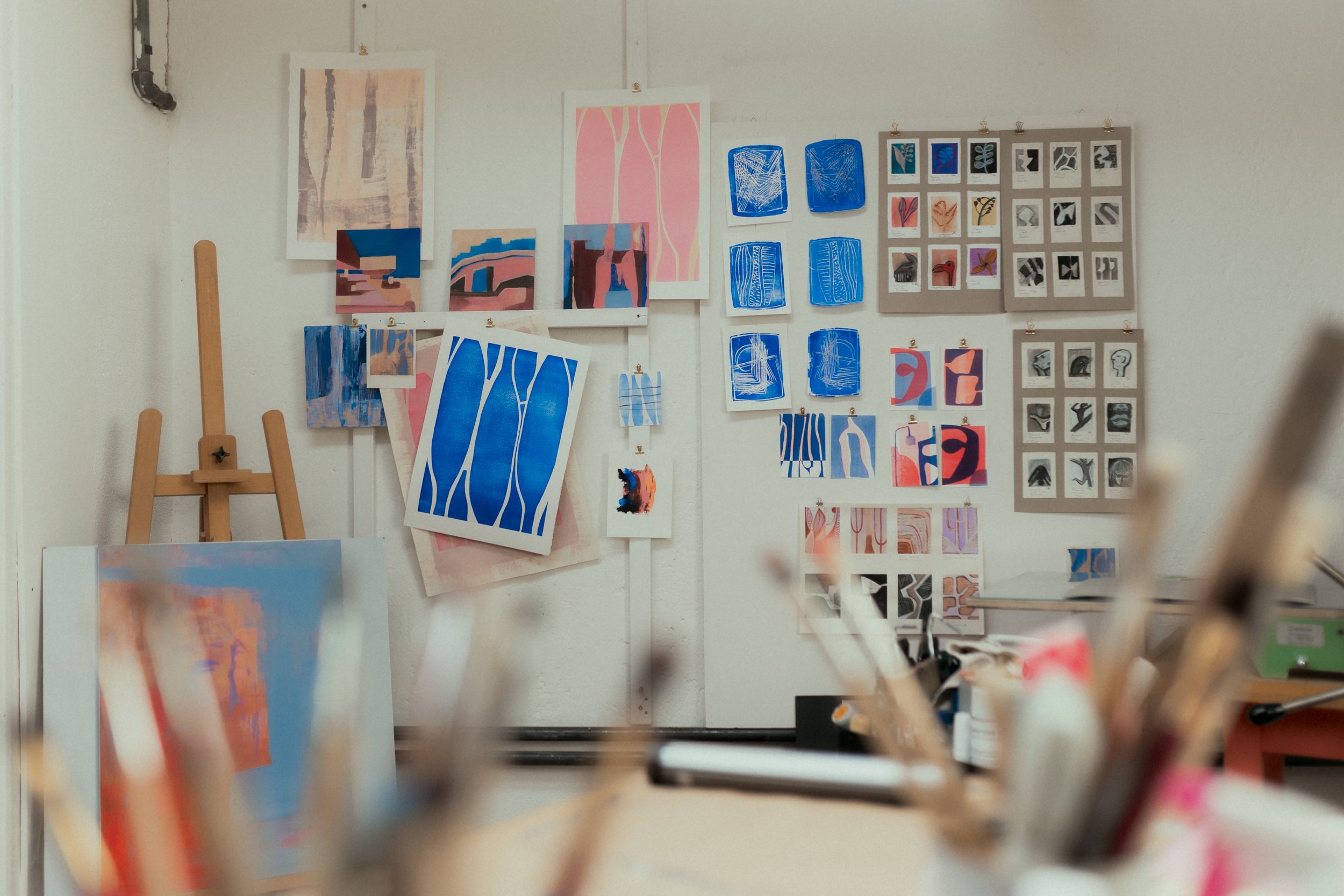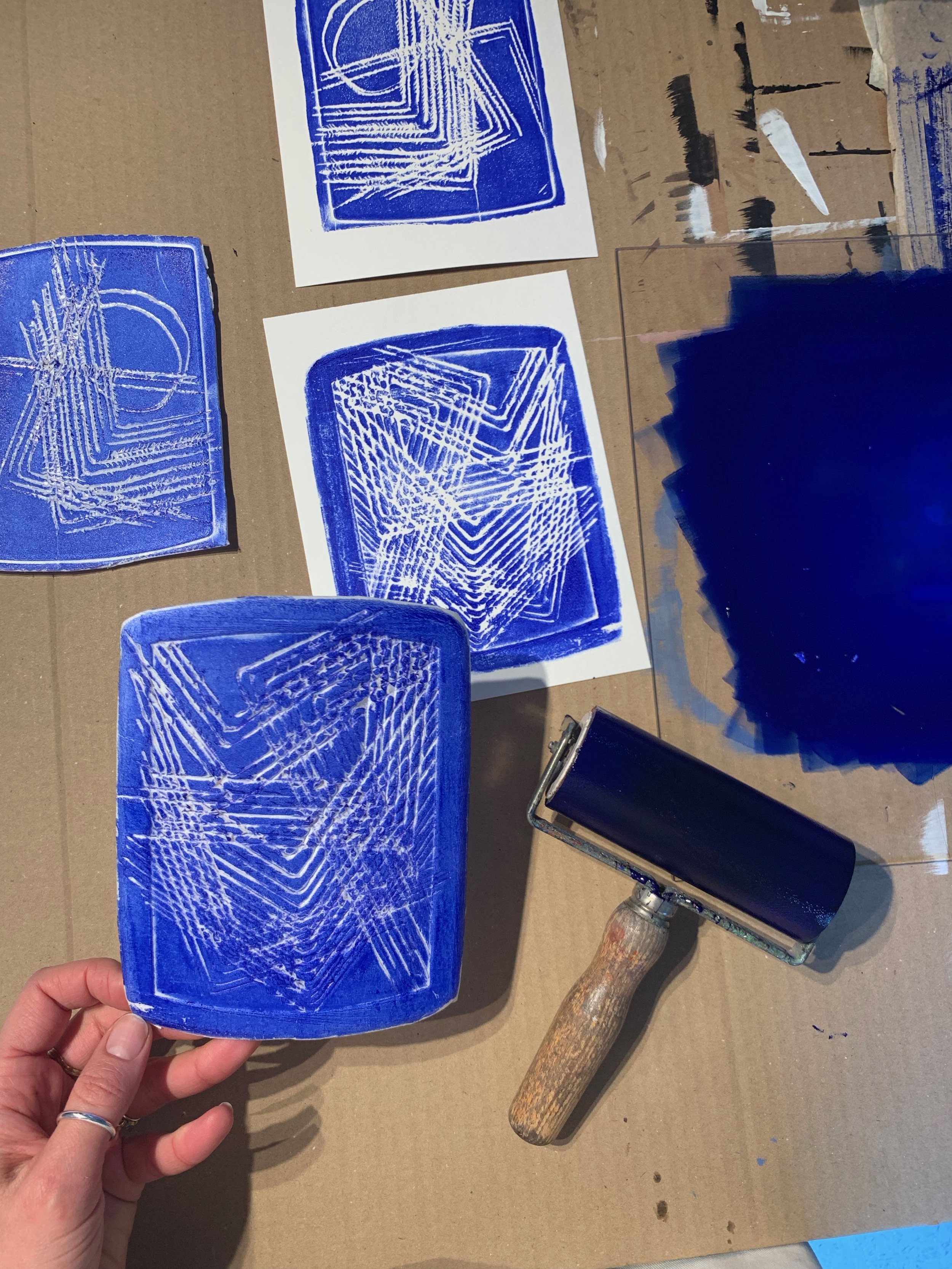SOULBASE Talk:
Lena Kaier
Multidisciplinary Artist
Meet Lena Christina Kaier, a multidisciplinary artist whose diverse path from studying art history to working as a flight attendant and lecturer has infused her with a unique creative perspective. Motivated by a fervent dedication to hands-on craftsmanship, Lena recently embarked on a new chapter of self-employment as an artist, exploring a myriad of techniques and materials in her work. Her transition from academia to the realm of art was spurred by an unyielding passion for creative expression and a quest for deeper fulfillment.
In our conversation with Lena, she shared insights into her multidisciplinary creative odyssey, elucidating her decision to embrace this transformative journey and the gratifications and trials it has brought. Additionally, we delved into her relationship with social media, a platform she navigates with both enthusiasm and discernment.
Embracing the inherent subjectivity of artistic interpretation, Lena cherishes constructive criticism and embraces the personal resonance of exhibiting her creations, allowing viewers to forge their own narratives from her multidisciplinary art.
Text by Annika Bielig-Bussmann & Lena Kaier
Imagery by David Schulheiss
In addition to your degree in art history, you pursued further education in textile design and screen printing. How has this training impacted and expanded your work?
Over the past few months, I've developed a series of new digital prints and Riso prints by digitally processing elements of my mono prints and linocuts on a tablet, then incorporating painted elements. It was only through my intensive involvement in pattern development, repeat design and screen printing that I began to take an interest in digital drawing and painting on the tablet, as well as techniques related to screen printing, such as Riso printing. I still often use a simple, bold formal language in my work, which I've adopted from pattern design.You are currently in a new creative phase. Do you think it is important for creatives to embrace new influences and explore new paths from time to time?
I can't speak for other creatives, but personally, I find that different phases and influences are essential to my work. I'm incredibly enthusiastic and curious about creative processes and techniques, and always eager to implement new ideas right away. However, I'm also learning to temper that impulse and focus on one or two things for a while before moving on to something new. The challenge for me is to maintain focus and strike a balance between continuity and new input.What does creativity mean to you, and is there a distinction between personal and professional creativity?
For me, creativity extends beyond the realms of art and design, encompassing various aspects of life. Thus, I don't perceive a fundamental conceptual difference between personal and professional creativity. In both spheres, creativity involves solving problems in innovative ways and exploring unconventional paths to achieve objectives. I often find that scarcity fosters creativity; when resources are limited, it prompts the discovery of unique solutions. However, the accessibility of these solutions depends on the environment and the opportunities it provides. I believe that a creative and open environment is crucial for nurturing creativity.Growing up in an artistic family, where my parents were avid makers, deeply influenced my creative development. They engaged in DIY projects, such as home renovations, furniture construction and clothing craftsmanship. Surrounded by sewing machines, fabrics, tools and paints, I had the opportunity to explore various skills and develop a curiosity and passion for experimentation. These experiences continue to enrich both my personal and professional life to this day.Was there a piece of advice or a conversation with someone that significantly influenced your transition from being a teacher to pursuing a career in the creative field?
Unfortunately, no. I wish I had an inspiring story to share! My decision was primarily driven by my own desire to dedicate more time to my artistic pursuits and a strong urge to break away from the confines of the school system. My role as an art teacher was becoming increasingly unfulfilling and draining. Whenever I visited creative individuals in their studios or workshops during my travels, I felt a surge of excitement and a deep longing to pursue my own path.At the time, there were few self-employed individuals in my circle, especially in the creative sector. Despite my father being an artist, he always maintained a day job and was somewhat skeptical of my choice to leave behind the security of a teaching career. He was aware of the challenges artists face in making a sustainable living, especially considering our responsibilities with three children to support.Although I still haven't achieved full financial independence through my creative work and rely on freelance gigs for support, I have never regretted my decision. Despite working longer hours and earning less, the fulfillment and happiness I derive from pursuing my passion are truly invaluable. I remain hopeful that my circumstances will improve in the future.Read Lena’s exclusive interview in our latest print issue, Creativity.
And follow her on Instagram
What aspects of your creative daily life would you like to outsource and why?
I would definitely outsource anything legal-related, such as taxes and accounting, in a heartbeat! I find it to be a huge burden and am constantly afraid of making a mistake in the German bureaucratic jungle. It takes a lot of time and nerves to gain even a rudimentary overview.Additionally, I would also hand over large parts of the marketing. It's hard to believe, but sometimes I spend 80% of my time on legal requirements, bookkeeping, website management and marketing, leaving only 20% for the actual artistic work. While there are parts of marketing that I enjoy, like taking photos, editing images, creating graphics and writing content, I find it incredibly difficult to deal with all aspects of sales, which are so important! I think I could sell other artists' work much better than my own. And judging by the flood of art marketing coaching offered online, I'm probably no exception.Let's discuss the role of social media in the creative world. From your perspective, do artists and creatives need to utilize social media platforms to sustain themselves financially through their art?
I believe that marketing art solely through exhibitions and a website, without a presence on social media, presents a significant challenge. Particularly in the early stages, social media serves as a powerful tool for gaining visibility and attracting attention to one's work. Personally, my Instagram profile preceded my website and has remained a vital platform for me. It not only serves marketing purposes but also facilitates idea exchange and networking with fellow creatives. Through social media, I've established crucial connections and engaged in fruitful collaborations, which, in turn, have boosted my reach and sales.However, social media also comes with its drawbacks, consuming significant time and exerting pressure. The algorithm necessitates a continuous presence, and prolonged absence results in reduced visibility, causing even followers to miss out on content. Moreover, the overwhelming abundance of profiles showcasing exceptional work can be demotivating, leading to thoughts like, "There's already so much great content out there; why bother with my art?" Striking a balance is essential. It's an ongoing process, wherein I assess how I navigate challenges, manage my time and shield myself from negative influences. Additionally, I'm exploring strategies to shift focus towards my website and establish a mailing list for a newsletter, aiming to reduce dependency on Instagram.










